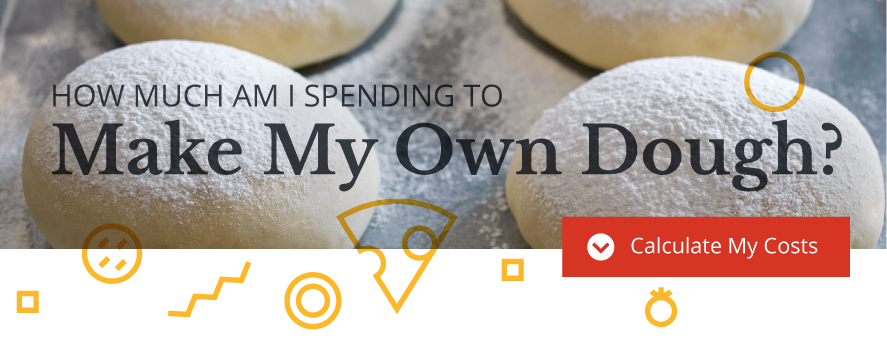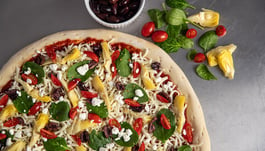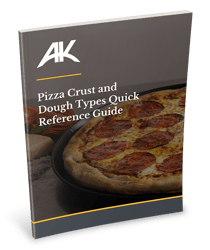
A lot goes into the price of a pizza in any restaurant, and the challenges of having a healthy net profit margin continue to grow. If it’s not the labor shortage and shifting consumer habits, it’s rising overhead costs.
There are some fixed costs and trends that restaurant owners can do little about, emphasizing the importance of focusing on what they can change. No matter the type of restaurant, managing ingredient costs is among them.
Cost and profit is a balancing act in any restaurant. You need to keep enough of the right types of ingredients on hand to meet patron expectations, yet you want to avoid surefire profit-busters of small batch ordering, too many specialty ingredients, and food waste.
Granted, you absorb a certain percentage in order to provide customers with an unforgettable experience, but how do you determine the appropriate amount of ingredients you need to order to prevent food costs from eroding profits?
Benchmarking
Comparing your business processes with comparable restaurant operations can help you examine various performance metrics and best practices. Look for ways to connect with other operators or reach out to non-competing peers to collaborate and exchange ideas. Gleaning knowledge from thought leaders in the restaurant industry is a great way to identify cost-saving opportunities.
One example includes consistently outlining ingredient costs and ordering needs at about the same time every week. This practice can provide you with a realistic snapshot of:
- Ingredients inventory and expenses
- Potential cost-control issues
- Appropriate pizza pricing
- Profitability
Any restaurateur knows that consistency — both on the income and expense sides — is a key to success.
RELATED: How much is made-from-scratch pizza dough costing you? Use our Online Pizza Dough Cost Calculator!
Pizza Ingredient Cost Projections
Failing to align benchmarking with your needs can easily upend restaurant profitability. Starting a customer loyalty program, offering online ordering, or revamping menu items may help boost sales, but won’t necessarily boost profit margins.
Implementing a few pizza ingredient inventory control best practices can help reduce the cost of goods sold and curtail missteps:
Don’t overbuy
Spoiled food is wasted money. To double check and further refine projected numbers, do a quick estimate on an evening’s worth of your table turnover rate. For example, if your full-service restaurant seats 100, and you’re open 6 hours, you could realistically turn each table 3 times — meaning you’ll serve 300 guests at capacity.
But, you won’t hit capacity every night. Determine your busiest days and most popular pies, and adjust your ingredient orders to accommodate. Using 'par' quantities for each day of the week as determined by historical POS system data is a great way to do this, plus it gives you a better idea of how much dough and the number of crusts to prep.
Bonus tip! Add 10% of the average amount of dough needed for each day to account for unanticipated traffic.
Request supplier quotes
Getting a few detailed quotes from suppliers and distributors throughout the year gives you options and also ensures you're getting the best value. For example, take a critical look at volumes. Does one vendor offer a lower purchase threshold for bigger discounts? Something that simple could be the difference between good and great profitability.
Compare actual versus ideal food costs
Actual food cost (what you pay for ingredients) usually differs from ideal food cost (what the ingredients you actually sold should have cost). That’s because you can’t measure every piece of food or account for all waste. Both costs rising together indicates your sales mix includes high food cost items that drive greater profitability and your projections are on course. However, if the opposite is true, there could be underlying issues like theft, inadequate staff training or inappropriate ingredient portioning.
Calculate profitability
Check ingredient costs against total sales to understand if — and how much — profit is being made. Also make it a best practice to take inventory weekly for essential ingredients like dough/crust, pepperoni, and cheese, and monthly for all ingredients and supplies. Taking inventory can be time-consuming but it's an important step in keeping your ingredient costs and overall profits on track.
Overcome misconceptions
Many restaurant owners and chefs have deeply held beliefs about ingredients, but some of these beliefs may be based on outdated information. In some cases, “fresh is best” is one of them. If the hidden costs to make pizza dough from scratch every day are eating away at profits by way of labor costs, inventory control and spoilage, it is worth looking into whether frozen dough balls or par-baked crusts are a better option.
It’s a common misconception that these options cost more or can’t match the same flavor, quality, or clean-label standards as fresh. Find an ingredient supplier who also serves as a strategic partner and can work with you to explore whether this cost-saving practice is right for your restaurant.
To better understand how decisions like making your own dough could impact costs and profitability, use our online interactive cost calculator. Click the button below to access it now, and contact our team with any questions!





